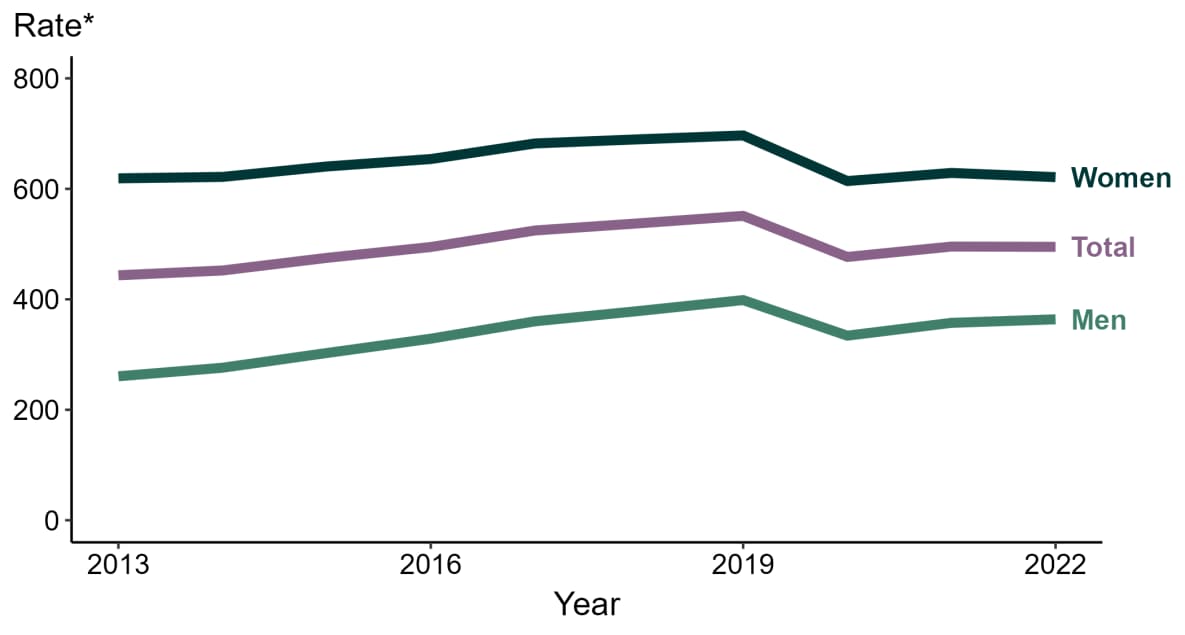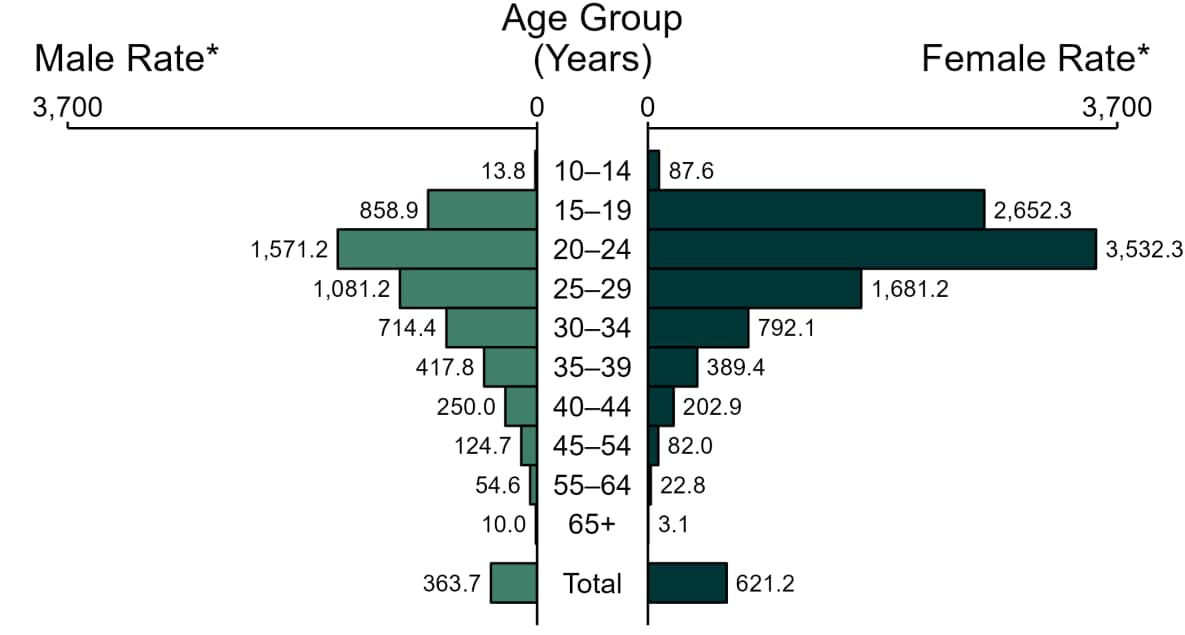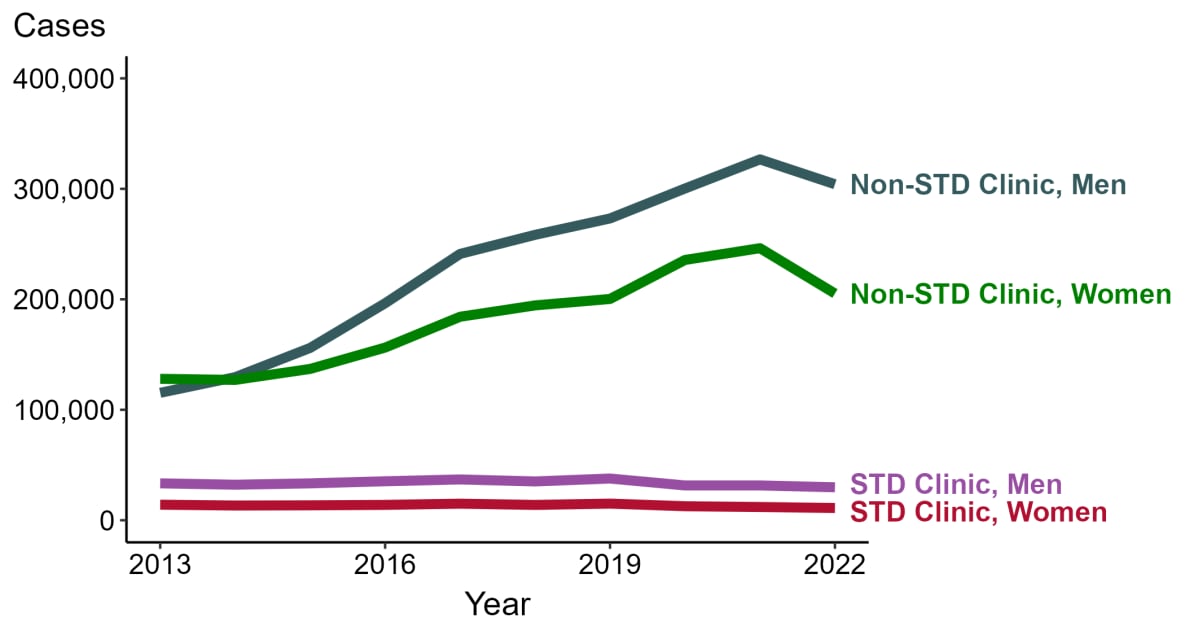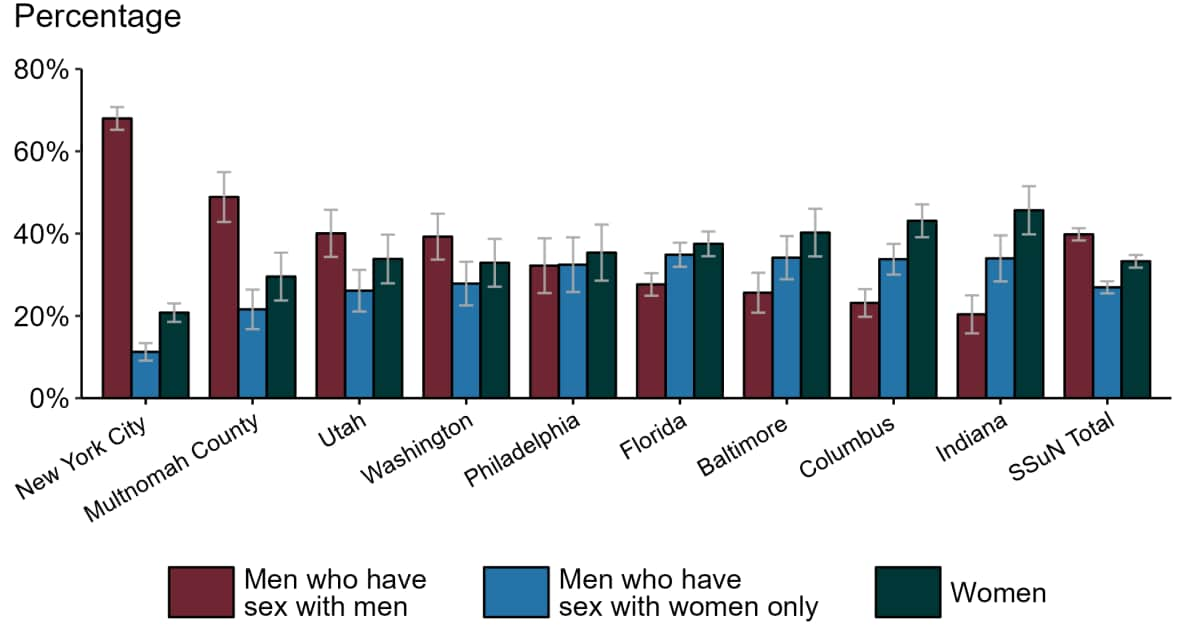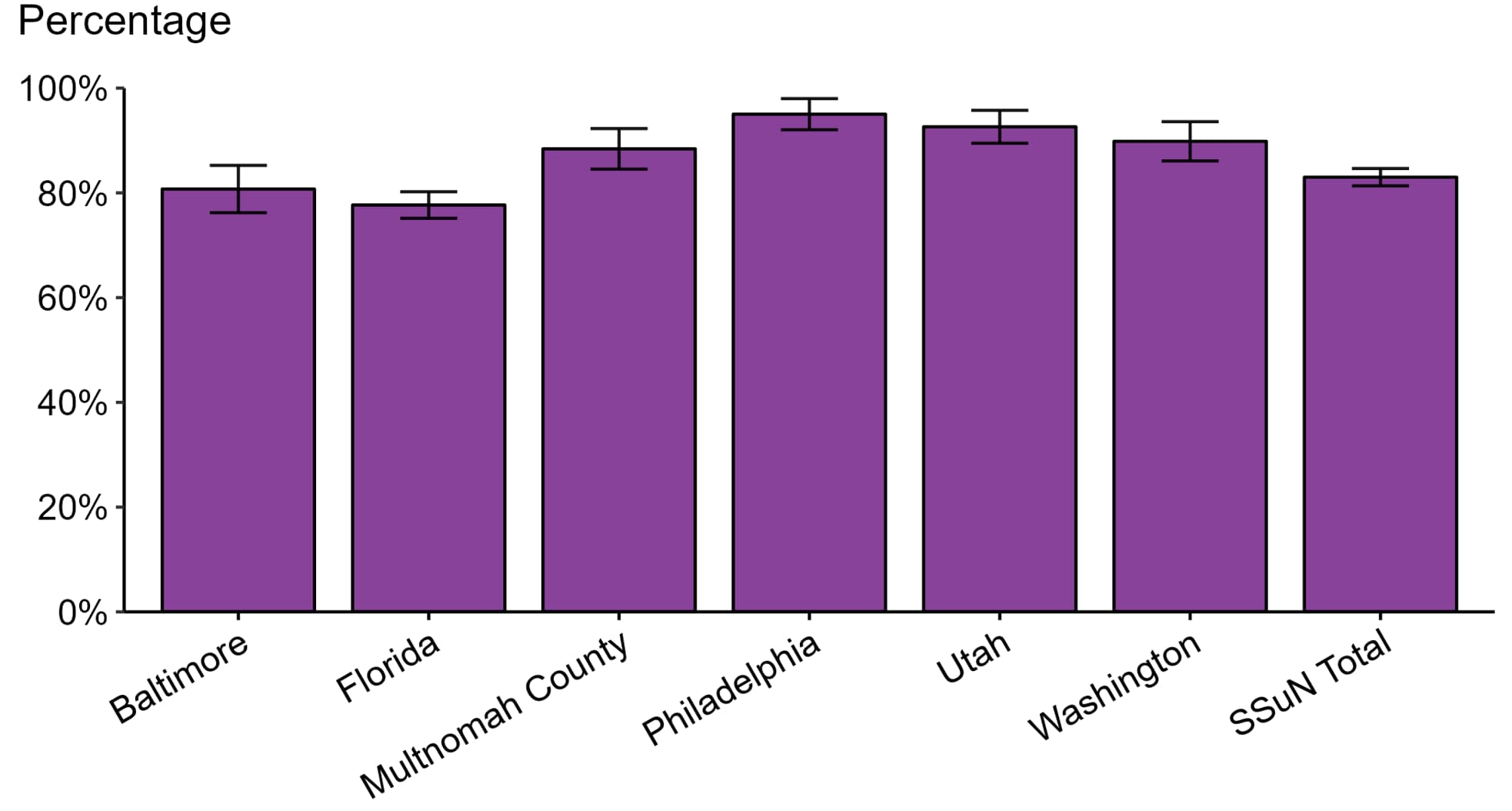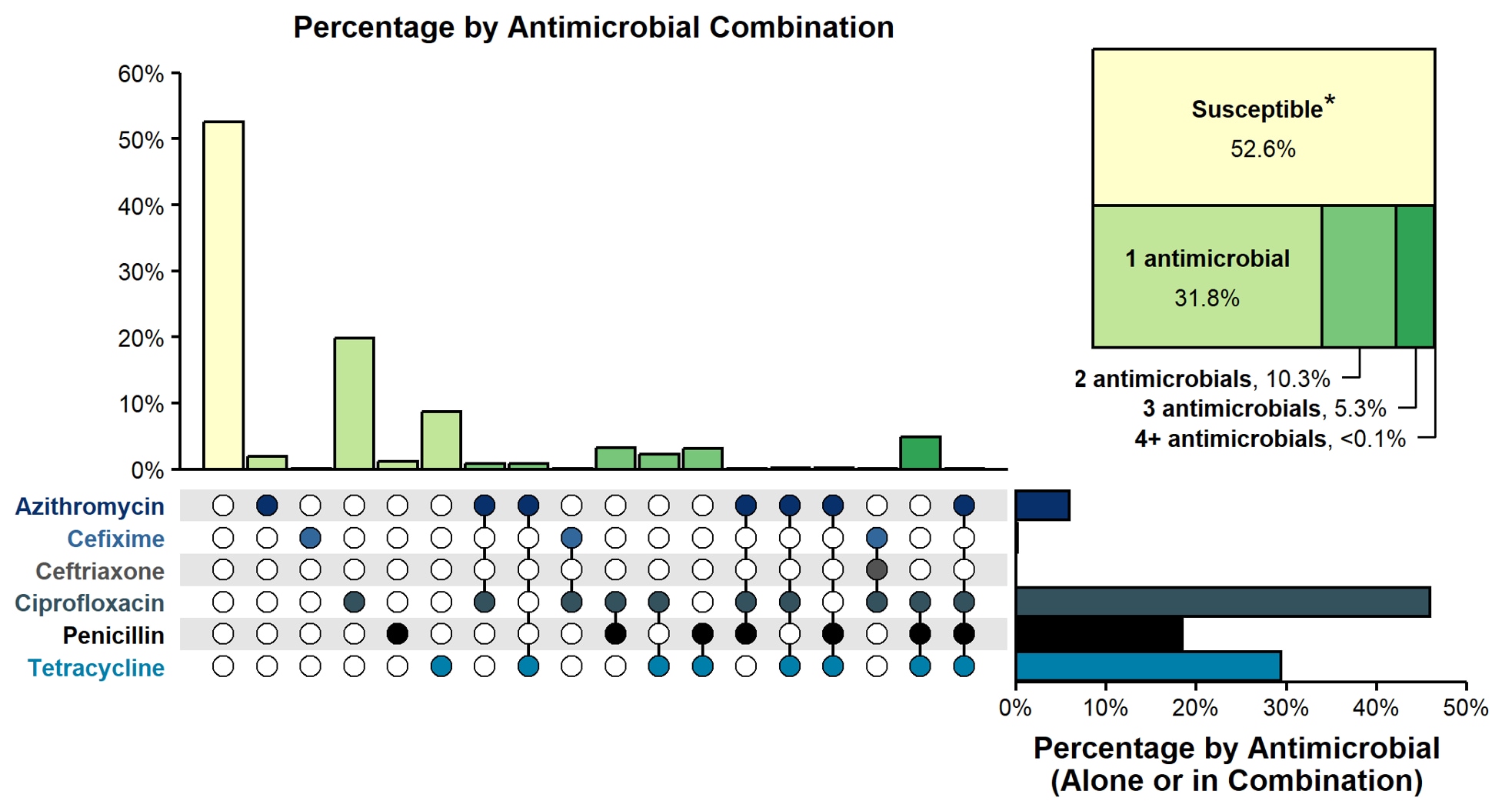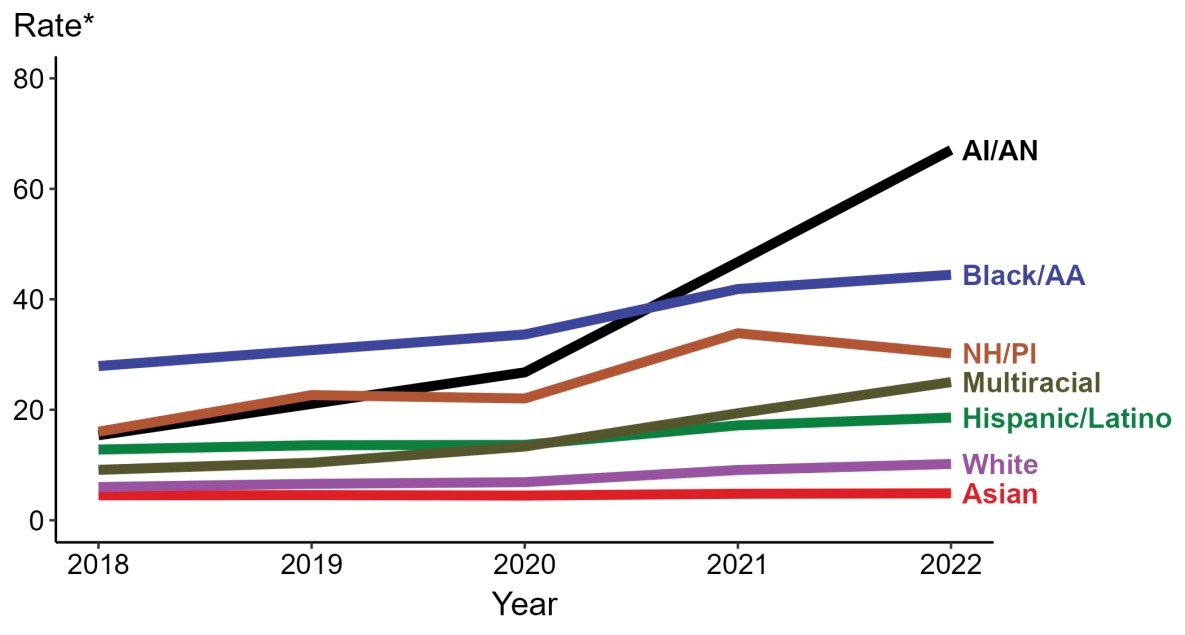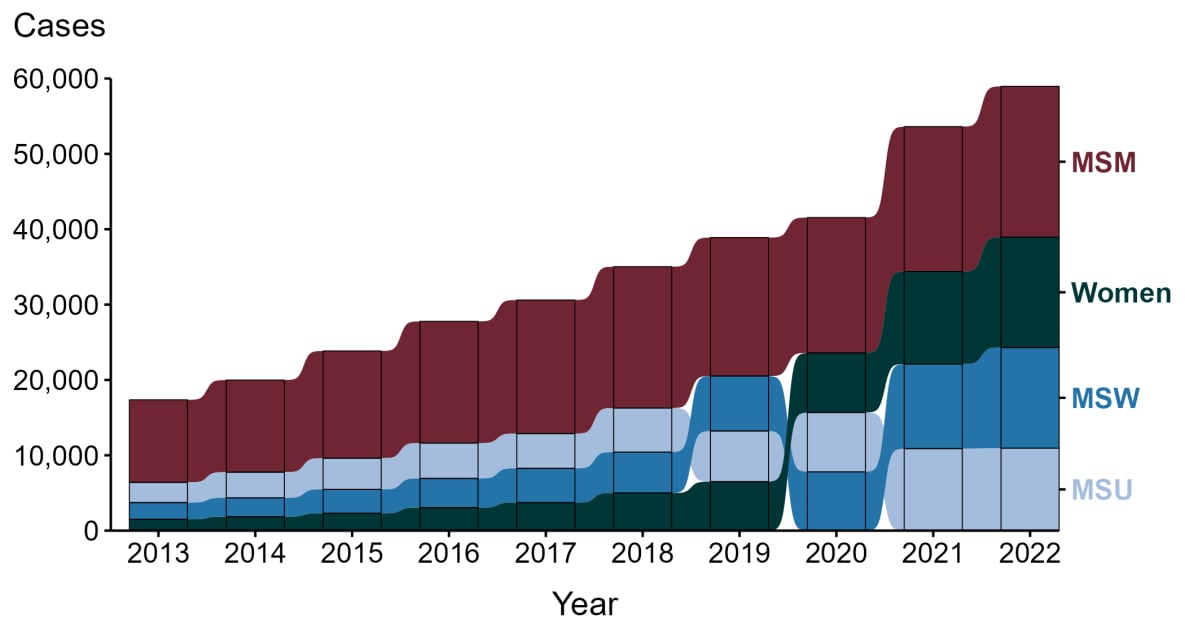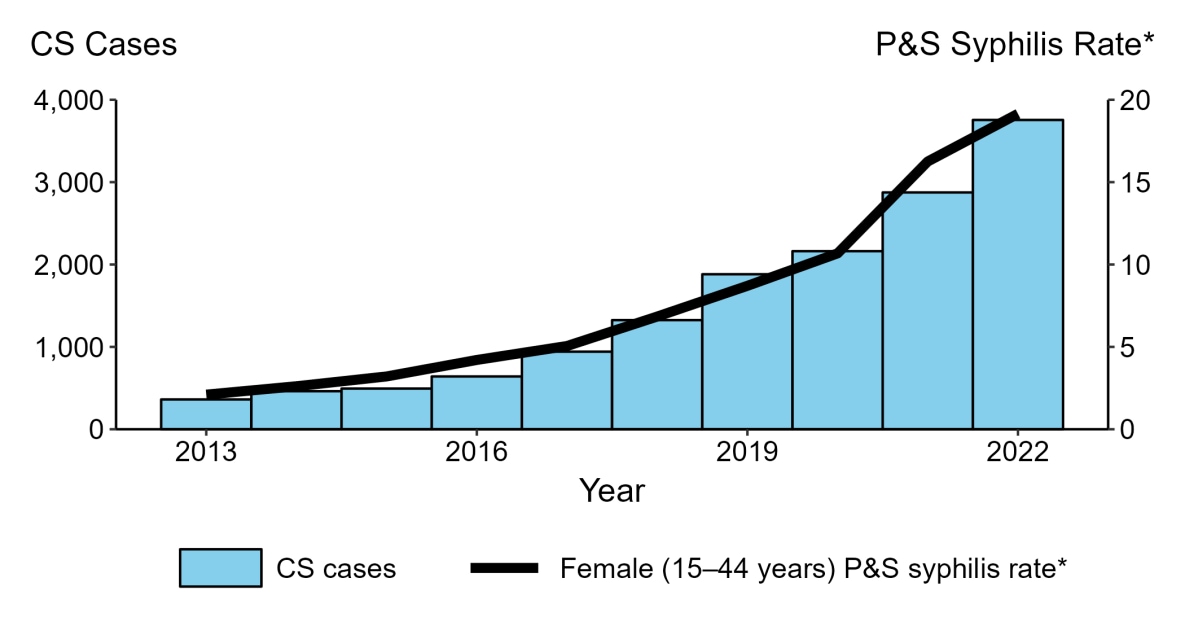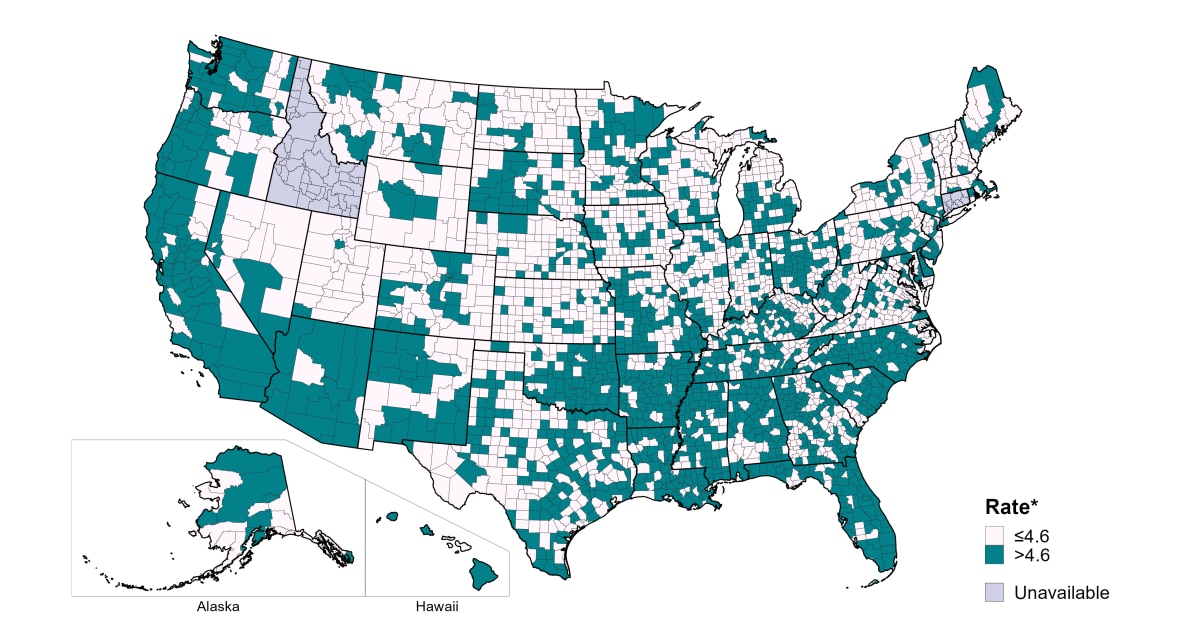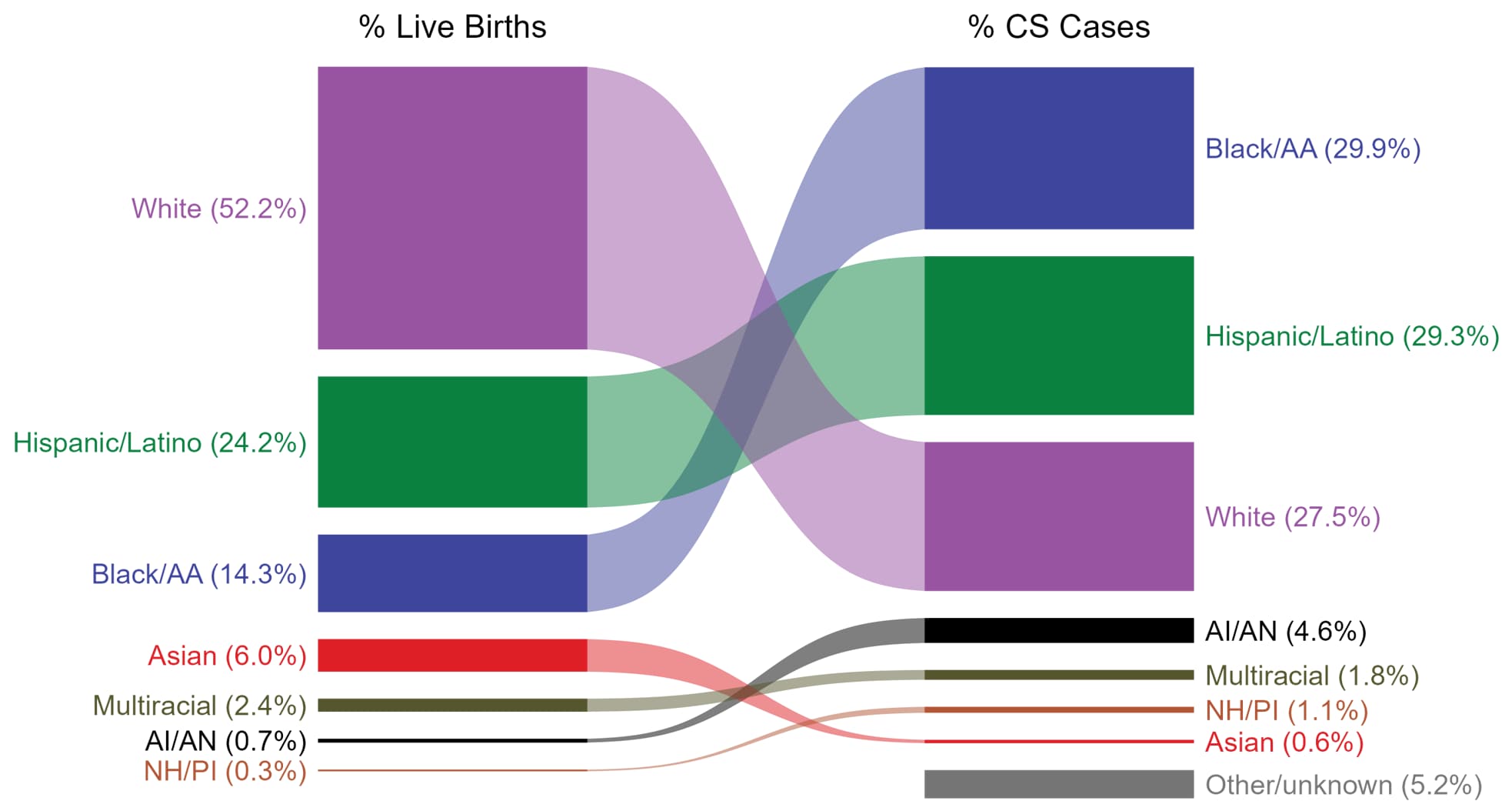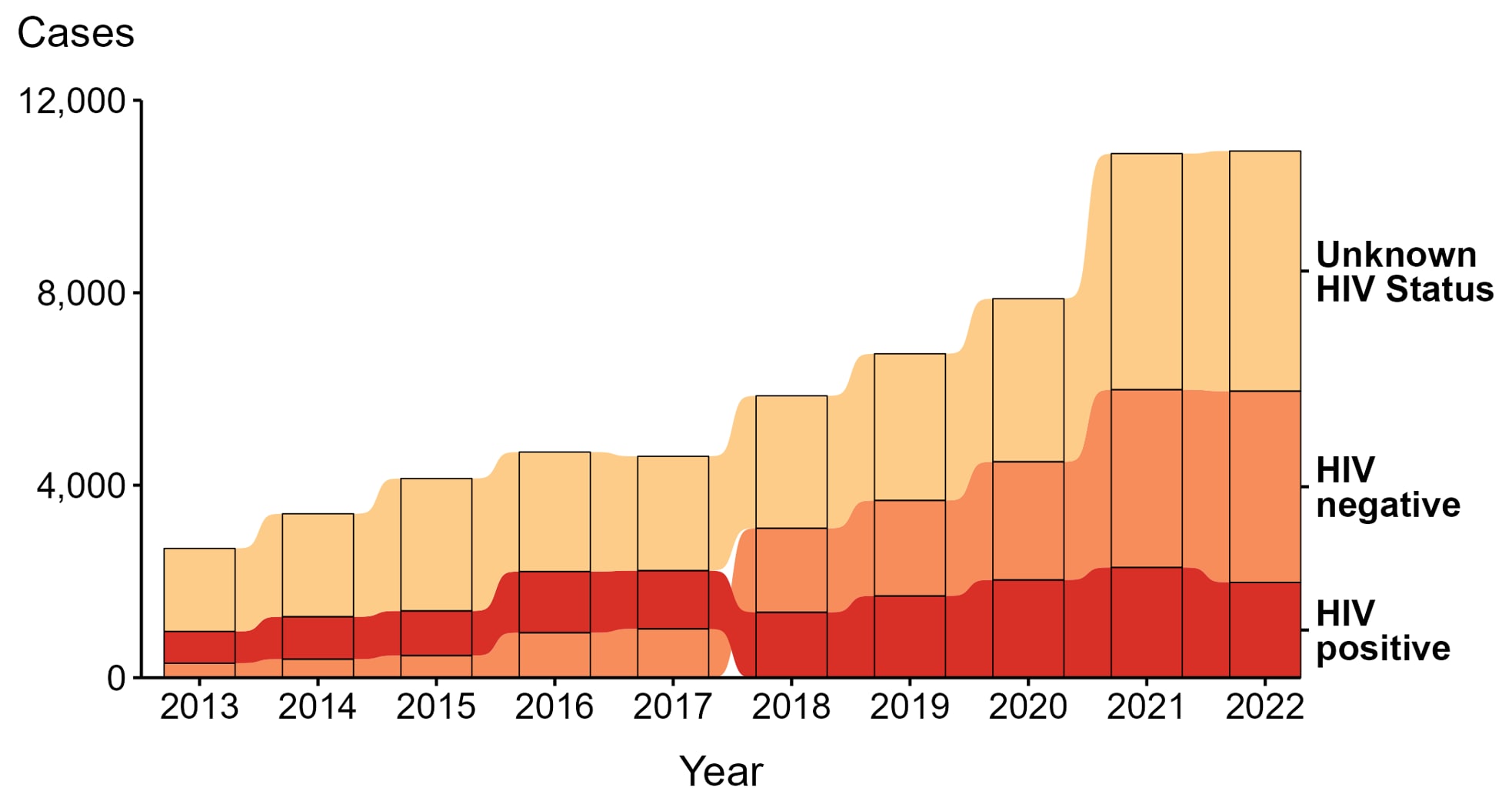National Overview of STIs, 2022
As noted in the 2021 National Academies of Sciences Engineering and Medicine report, Sexually Transmitted Infections: Adopting a Sexual Health Paradigm, surveillance is key to understanding the magnitude of sexually transmitted infections in the United States (US) and in subpopulations that are most affected.1 Sexually Transmitted Infections Surveillance, 2022 provides trends in nationally notifiable STIs for which there are federally funded control programs: chlamydia, gonorrhea, and syphilis, including congenital syphilis. This overview summarizes the national and sentinel surveillance data provided in the accompanying tables and figures in this report.
Because STIs often do not show symptoms, and screening is necessary for timely diagnosis and treatment, changes in access to sexual health care can affect the number of infections diagnosed and reported. Disruptions in STI-related prevention and care activities related to the US response to the COVID-19 pandemic had a pronounced impact on trends in STI surveillance data; therefore, trends for STI surveillance data collected during the pandemic and presented in Sexually Transmitted Infections Surveillance, 2022 should be interpreted cautiously. For more information, please see Impact of COVID-19 on STIs.
In 2022, a total of 1,649,716 cases of Chlamydia trachomatis infection were reported, making it the most common nationally notifiable sexually transmitted infection in the United States for that year. The rate of reported chlamydia in 2022 (495.0 per 100,000) was similar to the rate in 2021 (495.5 per 100,000). During 2021 to 2022, the rate of reported chlamydia among men increased 1.8% (from 357.4 to 363.7 per 100,000) and the rate among women decreased 1.2% (from 628.8 to 621.2 per 100,000). Decreases in rates of reported chlamydia among women were most pronounced among women aged 20 to 24 years (7.0% decrease from 2021), mirroring decreases among men aged 20 to 24 years (6.5% decrease from 2021). Nevertheless, rates of reported chlamydia remain highest among adolescents and young adults and in 2022, 57.7% of all cases of chlamydia were reported among persons aged 15–24 years.
As chlamydial infections are usually asymptomatic, case rates are heavily influenced by screening coverage. During the COVID-19 pandemic, many health care clinics limited in-person visits to patients with symptoms or closed entirely, and preventive health care visits where STI screening usually happens, such as annual reproductive health visits for young women decreased. During 2020, the number of chlamydia cases decreased substantially, likely reflecting disruptions in STI-related care during the initial shelter in place orders. Although rates have increased since 2020, the national rate of reported chlamydia in 2022 is still lower than the rate in 2019, suggesting that reductions in chlamydia screening coverage may have persisted.
In 2022, a total of 648,056 cases of gonorrhea were reported, making it the second most common nationally notifiable sexually transmitted infection in the United States for that year. After reaching a historic low in 2009, rates of reported gonorrhea increased through 2021; however, during 2021 to 2022, the overall rate of gonorrhea decreased 9.2%. During 2021 to 2022, rates decreased among both men and women, among all age groups, among most racial/Hispanic ethnicity groups, and decreases were observed in 41 states. Decreases were most pronounced among women (14.5% decrease), reflecting substantial decreases among women aged 20 to 24 years (18.1% decrease) and among women diagnosed in non-sexually transmitted disease (STD) clinic settings (16.7% decrease).
Since 2013, rates of reported gonorrhea have been higher among men compared to women, likely reflecting cases identified in both men who have sex with men (MSM) and men who have sex with women only (MSW). Although there are limited data available on sexual behaviors of persons reported with gonorrhea at the national level, enhanced data from jurisdictions participating in a sentinel surveillance system, the STD Surveillance Network (SSuN), suggest that almost 40% of gonorrhea cases occurred among MSM in 2022; however, this proportion varied across jurisdictions participating in SSuN.
Gonorrhea can quickly develop resistance to antibiotics used to treat infection. Based on gonococcal isolates collected through sentinel surveillance in the Gonococcal Isolate Surveillance Project (GISP), about half of all infections were estimated to be resistant or have elevated minimum inhibitory concentrations (MICs) to at least one antibiotic in 2022; however, almost all circulating strains in the United States remain susceptible to ceftriaxone, the primary recommended treatment for uncomplicated gonorrhea. In 2022, <0.1% of isolates displayed elevated ceftriaxone MICs. Continued monitoring of susceptibility patterns to antibiotics is critical to inform gonorrhea treatment guidelines.
Despite continued disruptions in access to health care related to the COVID-19 pandemic, over 80% of reported gonorrhea cases in jurisdictions participating in the sentinel surveillance system SSuN in 2022 received the recommended treatment. Continued surveillance of treatment practices is a critical public health priority to help ensure that patients receive the highest quality of care and to address the emerging threat of antimicrobial-resistant gonorrhea.
In 2022, 207,255 cases of syphilis (all stages and congenital syphilis) were reported which is the greatest number of cases reported since 1950 and an increase of 17.3% since 2021. In 2022, there were 59,016 cases of primary and secondary (P&S) syphilis, the most infectious stages of the disease, reported for a national rate of 17.7 per 100,000. Since reaching a historic low in 2000 and 2001, the rate of P&S syphilis has increased almost every year, increasing 9.3% during 2021 to 2022. Rates of P&S syphilis increased among both men and women, among all age groups, and in all regions of the United States. Rates of P&S syphilis increased in most racial/Hispanic ethnicity groups, with greatest increases among non-Hispanic American Indian/Alaska Native persons who also had the highest P&S syphilis rate in 2022 (67.0 per 100,000).
Rates of P&S syphilis among women have increased since 2013. During 2021 to 2022, the national rate of P&S syphilis among women increased 19.2% with increases observed in 36 states and the District of Columbia. These increases among women are concurrent with increases in cases among MSW, reflecting an expanding heterosexual syphilis epidemic in the United States. Additionally, MSM continue to be disproportionately impacted by syphilis, accounting for almost half (45.1%) of all male P&S syphilis cases in 2022. During 2021 to 2022, the number of cases of P&S syphilis among MSM increased 4.0%.
In 2022, 3,755 cases of congenital syphilis were reported, including 282 congenital syphilis-related stillbirths and infant deaths. The national congenital syphilis rate of 102.5 cases per 100,000 live births in 2022 represents a 30.6% increase relative to 2021 and is the highest reported rate since 1991. Although the majority of congenital syphilis cases were reported from a few states, in 2022, almost all jurisdictions (47 states and the District of Columbia) reported at least one case of congenital syphilis and 39 states and the District of Columbia had increases in rates congenital syphilis during 2021 to 2022.
These increases in congenital syphilis mirror increases in syphilis among reproductive aged women. During 2021 to 2022 the rate of P&S syphilis increased 17.2% among women aged 15–44 years and rates increased in 35 states. In 2022, 46% of counties had a rate of P&S syphilis among women aged 15–44 years higher than the national Healthy People 2030 goal for reducing syphilis among women (4.6 per 100,000).
As in past years, there were significant disparities in reported STIs. In 2022, half (49.8%) of reported cases of chlamydia, gonorrhea, and syphilis (all stages) were among adolescents and young adults aged 15–24 years. Additionally, MSM are disproportionally impacted by STIs, including gonorrhea and P&S syphilis, and co-infection with HIV is common; in 2022, 36.4% of MSM with P&S syphilis were persons with diagnosed HIV. Disparities continue to persist in rates of reported STIs among some racial minority or Hispanic ethnicity groups when compared with rates among non-Hispanic White persons. In 2022, 31.1% of all cases of chlamydia, gonorrhea, and P&S syphilis were among non-Hispanic Black or African American persons, even though they made up only 12.6% of the US population.
It is important to note that these disparities are unlikely explained by differences in sexual behavior and rather reflect differential access to quality sexual health care, as well as differences in sexual network characteristics. For example, in communities with higher prevalence of STIs, with each sexual encounter, people face a greater chance of encountering an infected partner than those in lower prevalence settings do, regardless of similar sexual behavior patterns. Acknowledging inequities in STI rates as well as their root causes is a critical first step toward empowering affected groups and the public health community to collaborate in addressing systemic inequities in the burden of disease — with the goal of minimizing the health impact of STIs on individuals and populations.
- National Academies of Sciences, Engineering, and Medicine 2021. Sexually Transmitted Infections: Adopting a Sexual Health Paradigm. Washington, DC: The National Academies Press. https://doi.org/10.17226/25955
